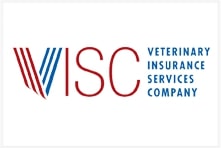This article was originally printed in the September/October 2024 issue of the California Veterinarian magazine.
Talking Heads sang “Once in a Lifetime” over 40 years ago, and the refrain “Well, how did I get here?” still rings clear for me today, 28 years after graduating from the University of Wisconsin’s veterinary school. “Here” in my case is the California Department of Food and Agriculture, where I work as the Redding District’s Supervising Veterinarian. And now the question: how did I get here?
My career started as a dairy veterinarian. I loved all things bovine (still do) and spent the next 16 years in bovine practice, first as an associate and later as a solo practitioner. I was fortunate to have had this opportunity. My wife and I were able to live our lives in rural regions, and our kids thrived and eventually went off to college. However, as anyone remotely connected to dairy knows, volatility is the norm and I saw farms either grow or close, or both. Like banks that “couldn’t fail,” I saw the larger dairies begin to close or leave. Eventually, my own little piece of paradise began to succumb to economic pressures, and as dairy economics continued to suffer, so did support services like veterinary care. At the time, solo duties had started to become a 24/7 grind for me, and not without consequence: I developed hypertension. Today, 75% of the dairies that I serviced are gone, replaced by nut and fruit trees that don’t develop calving problems, mastitis, or gut health mishaps.
In 2012 I left private practice to become the Dairy Food Safety Fellow at the California Animal Health and Food Safety (CAHFS) lab at UC Davis, where a whole new world opened to me. Operated by an incredibly talented and supportive faculty and staff, CAHFS is where casework is submitted from all corners of California agriculture and beyond. During my tenure, new and challenging cases were submitted each day, and I had the good fortune to work them up. Veterinarians play an important role in food safety, but the CAHFS lab showed me that food safety veterinarians support so much more than food safety. Toxicology, histopathology, bacteriology, and virology demonstrated to me why an animal died and what steps could be taken to prevent the same fate to other animals or even people. I had found my herd and my blood pressure dropped.
Remaining at CAHFS would have been wonderful, but my fellowship had an end date. So, with some encouragement, I joined the California Department of Food and Agriculture (CDFA), Animal Health Branch, at the Redding District Office (RDO) as a veterinary general, where food safety and animal husbandry stand front and center. Foreign animal disease (FAD) surveillance is an important part of private practice, and RDO was always supportive of me in that role. As a CDFA veterinarian, I had a chance to give back and assist practitioners, farmers, and ranchers alike.
Often described as regulatory vets, CDFA veterinarians are, in actuality, more like facilitators. Farming has a myriad of regulations and CDFA veterinarians help animal agriculture producers to best adhere to these regulations, ensure food safety, and sell their products locally, nationally, and internationally. As district FAD diagnosticians, we (and our U.S. Department of Agriculture counterparts) work with animal agriculture to keep FADs out of our country. FADs are cause for concern because they can decimate whole segments of a species, create trade barriers, and cause farm closures. Other disease outbreaks, though not a FAD, may represent a public health risk and require farm closures. Understandably, these events can be exceedingly difficult and emotionally taxing, as animals are sometimes required to be euthanized, herds or flocks are depopulated, and people’s lives are tragically disrupted. CDFA works together with farmers to resolve the disruptions, get them back into business as soon as possible, and reopen trade with countries that import California agricultural products.
Luckily, protecting agriculture isn’t always relegated to livestock disease eradication. Practitioners send me odd cases that I enjoy learning about and assisting to work up. I watch veterinary students develop into dedicated practitioners. Occasionally, people are erroneously sent to me while trying to contact some other government agency and they inadvertently dial my office. I understand their frustration, joke about “We’re the gu’ment, we’re here to help,” and do what I can to assist.
Ten years on, I still see my former clients, if only to swap stories of our now-adult children. I’m lucky to continue interacting with CAHFS almost daily. I’ve been privileged to learn from some very accomplished people and watched quite a few retire taking much institutional knowledge with them. However, the old guard is being replaced by a new crop of eager, young veterinarians who I’m confident can improve upon or replace the axiom “that’s how it’s always been done”—hopefully before I turn in my office keys for the last time.








